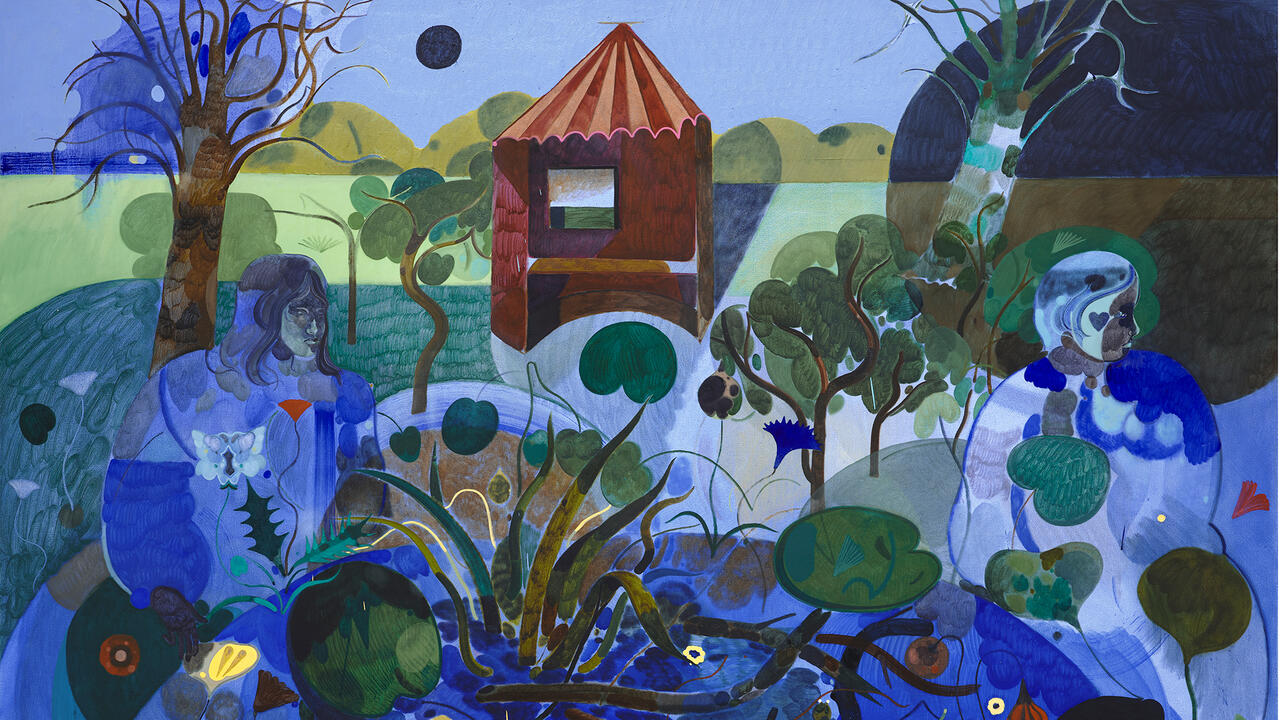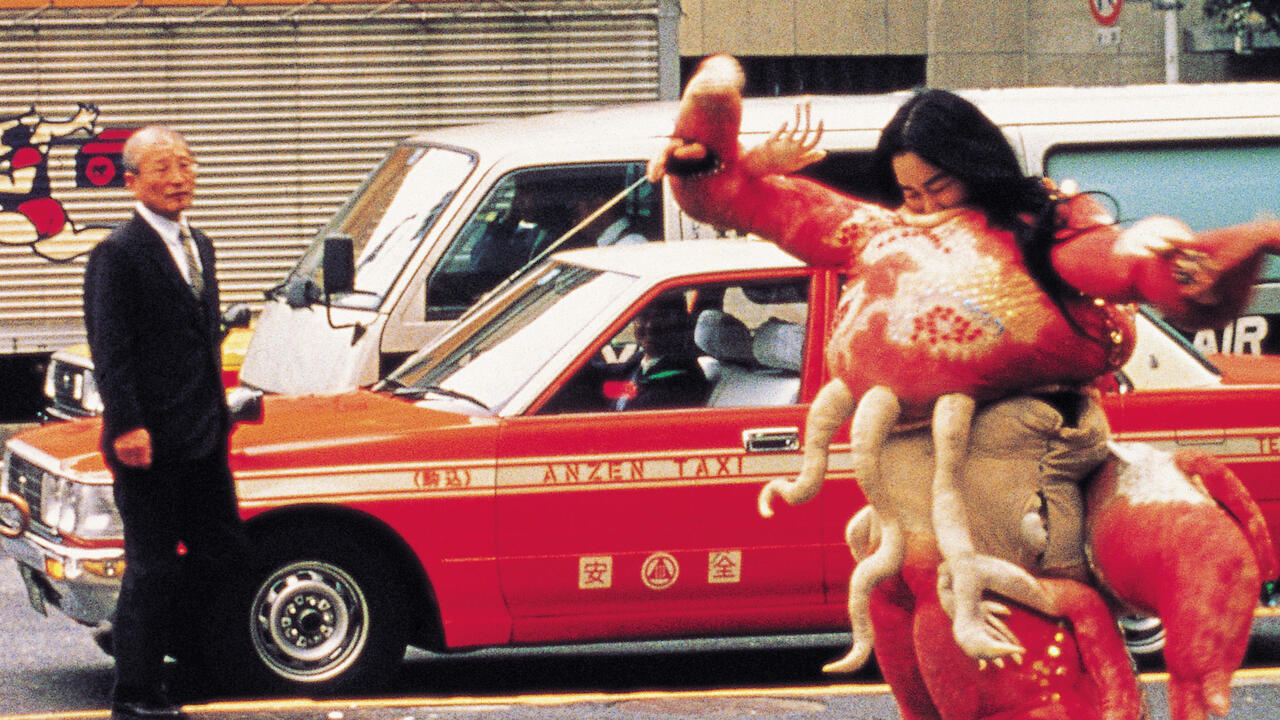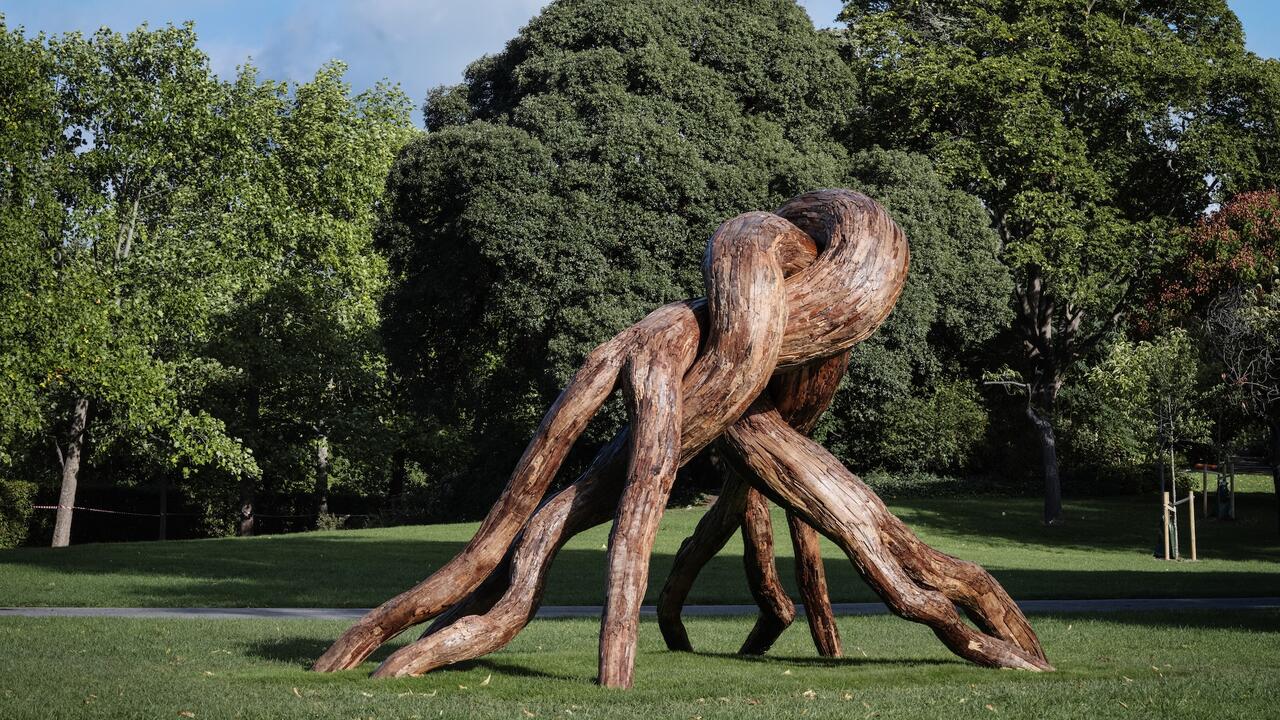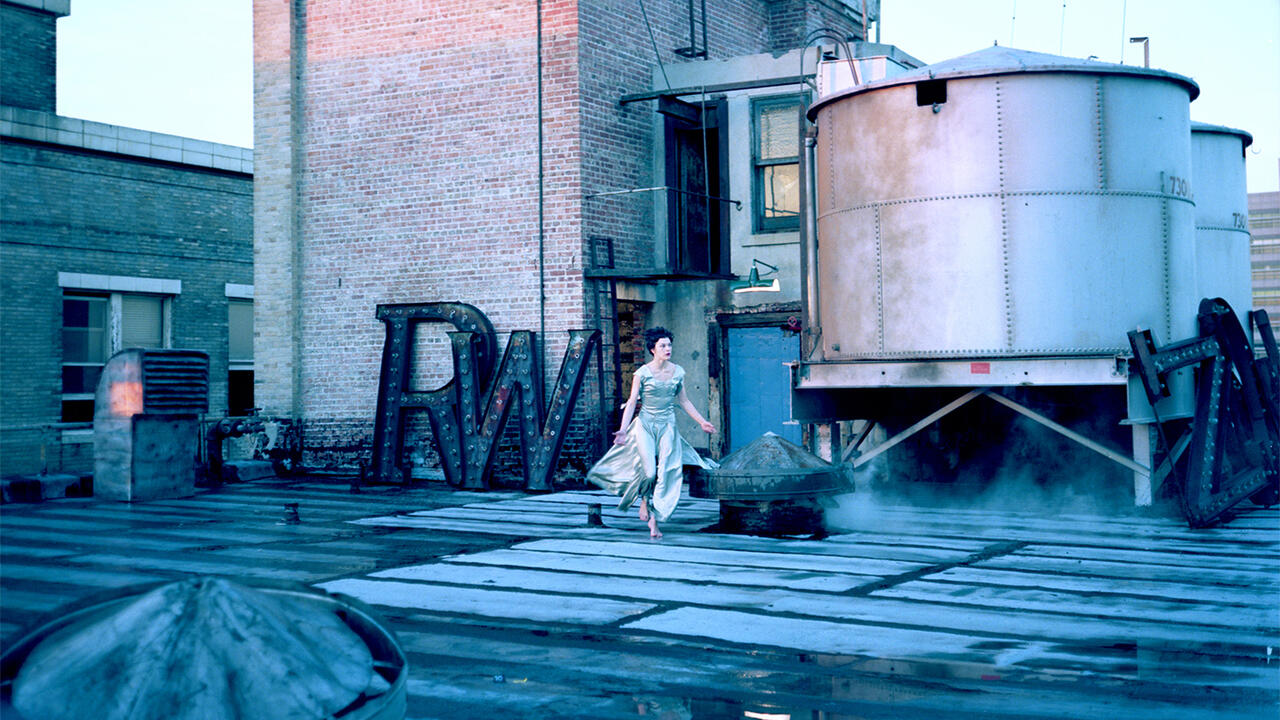Out of the Cave
What do the first art works and recent speculations about early man tell us about today?
What do the first art works and recent speculations about early man tell us about today?

Between 75,000 and 100,000 years ago, our planet’s oldest known works of art were produced in the place we currently call South Africa by members of the species Homo sapiens, which is to say creatures with the same genetic make-up as you and me. They’re modest objects, these art works: shards of red ochre a few centimetres long, their surfaces planed into an approximation of flatness and incised with a pattern of crossed lines that recall the diamond designs on a harlequin’s stockings, or doodles drawn by somebody suffering through a long and boring telephone call. We do not know the sex, age or relative social position of the people who made them, or to what end they were made. The paleo-anthropologist Christopher S. Henshilwood, whose team unearthed the carvings in the Blombos Cave complex at the turn of this century, has argued that they are evidence of their makers ‘cognitively modern human behaviour’¹ who had ‘an ability to think in the abstract, to think in terms of past, present and future’² and ‘would have needed language […] to have been able to explain to other people in the cave what the meaning of these pieces was.’³ This, of course, is something that the Blombos artists cannot explain to us. While the ochres suggest an earlier zero hour for recognizably human culture than had been previously supposed, and relocate it to Middle Paleolithic Africa from the traditional arena of Middle and Upper Paleolithic Europe (a shift not without its present day political consequences, nor without its critics),4 they remain enigmatic – a smile without the accompanying Cheshire Cat. Perhaps the only certain thing these abstract markings tell us is that the people who made them chose to expend a portion of their energies in a manner that did not benefit their survival, or at least not in any empirically verifiable sense. Unlike hunting or gathering food, or seeking shelter or warmth, incising planed shards of ochre was not quite work, but closer to an ineffable form of play.
All our ancestors leave us a fractured inheritance, an imperfect record of their lives, and we feel this most keenly the further back through time we travel. Entropy – the grinding of all things into dust – ensures that any but the hardiest of historical deposits are eventually lost to us. Cultural objects that prehistoric people may have produced from plant matter or animal hides have disappeared forever, as have their living bodies and their languages, and so their dances, stories and songs. If, as the Blombos ochres indicate, there has been art on this planet for the last 100,000 years, our experience of most of it is approximate to visiting the site of an ice sculpture the day after it has melted, never knowing what form it took, or even having seen its last, slushy remnants seep into the hot earth. Some questions occur: do these gaps in our family history, in some half-buried, hard-to-define but nevertheless really quite deeply felt way, cause us a kind of cultural anxiety or pain? And if they do, is it based on our separation from or our proximity to our origins, on the idea that we’re too little like our parents, or too much? Just as works of science fiction tell us more about the time in which they were made than they do about the future, speculations about prehistory, especially outside the cautious realm of current scholarship, function more as mirrors held up to a particular present than windows on the past. As a species, we have strange and hungry tendency to fill up empty spaces with ourselves, even if those spaces are our own yesterdays.

In his book The Mind in the Cave: Consciousness and the Origins of Art (2002), the cognitive archaeologist David Lewis-Williams interprets the extraordinary flowering of artistic activity in France, Spain and other European territories in the late Ice Age (culminating in the cave paintings at the famous Lascaux, Chauvet and Altimira sites) as a response by the Aurignacian Homo sapiens culture to the need to compete for resources with the Neanderthals – the sole hominid species in Europe for more than 100,000 years, until the arrival of anatomically modern humans from Africa around 45,000 bce. The Aurignacians, Lewis-Williams argues, recognized that the Neanderthals could not create representational art, which requires a specifically Homo sapiens form of consciousness, and so escalated their production of it to, at least in part, assert and entrench ‘their social dominance’.5 Other, bloodier, acts of aggression accompanied this Darwinian propaganda, and the last Neanderthal died some 35,000 years ago. If Lewis-Williams is correct (and there’s no credible evidence that pre-Homo sapiens material culture went beyond the utilitarian or, at a push, the very basically decorative)6 representational art is an evolutionary advantage that belongs solely to our species, and one that we pressed into service alongside advanced language, technology and hunting skills to extinguish our competitors. The only images of Neanderthals we have are the ones we have made, and perhaps this accounts for why they often feel so melancholy. Each shabby, fur-wrapped waxwork in a provincial natural history museum and every illustration of a squat and hairy hominid in a children’s encyclopedia was created using the same mental toolbox that guaranteed their subjects’ oblivion.
The unhappy meeting of these two human species in Upper Paleolithic Europe is the subject of William Golding’s second novel, The Inheritors (1955), written seven years after the Lascaux caves were opened to the public in 1948. Lascaux was discovered in 1940 by four French teenagers and – as though anticipating the caveman-spaceman-supercomputer-starchild evolutionary arc described in Stanley Kubrick’s 1968 film 2001: A Space Odyssey – a dog called ‘Robot’. The Inheritors opens with a band of Neanderthals, who Golding presents as a gentle people who hold what little property they have in common, feel guilt when hunger forces them to eat animal flesh, communicate through both speech and a telepathic process they call ‘sharing a picture’, bury and mourn their dead, and worship a female deity named Oa, who appears to them in the form of icicles in a cave mouth (an auto-generative and auto-destructive icon?) and whose image they have carved into a pebble that’s surely meant to evoke the Venus of Willendorf – a balloon-breasted, Upper Paleolithic limestone figurine found in Austria in 1908, which most contemporary scholars attribute to an Aurignacian maker. The Neanderthals’ peaceful, though bare, existence is shattered by the arrival of a group of technologically adept Homo sapiens, who pursue them in boats, abducting their children for playthings and attacking the adults with bows and arrows, a process Golding describes through the cognitive lens of the victims, who can barely comprehend these strange new creatures, or their own imminent extinction. The sole survivor, Lok,7 dies of despair, ‘growing into the earth’8 as though he were devolving into some even earlier form of life. In the final chapter, the perspective shifts to that of the ‘inheritors’ of the title and Golding adopts a more sophisticated linguistic register. The novel closes with the Homo sapiens’ chieftain charting his boat through unknown waters, banked by a thick black forest: ‘He peered forward past the sail to see what lay at the other end of the lake, but it was so long, and there was such a flashing from the water that he could not see if the line of darkness had an ending.’9 This ‘line’, we are to infer, represents our species’ evolutionary trajectory, trending towards violence and deceit, and away from the knowledge of the hearts and minds of others. The telepathic ability to ‘share a picture’, and maybe with it the possibility of images to embody a common and equitable truth, dies with the last Neanderthal.
Although it has a partial antecedent in Jack London’s novel Before Adam (1906–7), in which a schoolboy dreams of the extermination of the inarticulate ‘cave people’ by a more advanced ‘fire people’, The Inheritors perhaps marks the moment in western culture when the Paleolithic’s evolutionary losers begin to be presented not only with sympathy, but also as possessing positive attributes that modern humans lack. (While the villainous Morlocks in H.G. Wells’ 1895 novella The Time Machine live in the year 802,701 ace, and are the devolved descendents of the late 19th-century working class, they are recognizably based on the nasty, brutish and short image of the Neanderthal that haunted the Victorian mind following the discovery of pre-Homo sapiens skull fragments in the Neander Valley, Germany, in 1852, and their later interpretation in the light of Charles Darwin’s work on natural selection). Significantly, Golding does not merely extend the Romantic idea of the ‘noble savage’ into the genetic past. Its 18th- and early 19th-century proponents, among them Baron de Lahontan and François-René de Chateaubriand, largely emphasized cultural and environmental (rather than any perceived biological), differences between ‘primitive’ and ‘civilized’ man – indeed, the whole construct ultimately depends us on imagining these twin figures plunged into a kind of Enlightenment-era version of John Landis’ role-reversal comedy Trading Places (1983). The Inheritors, though, presents us with two distinct species, one peaceable, one steeped in blood. Given that it was written in the aftermath of the ‘rational’ violence of the Holocaust and Hiroshima, it’s hard not to think that Golding had these horrors – these extensions of ‘the line of darkness’ – in mind. The reader is both the ‘inheritor’ of the Earth from Lok’s people, and of the original sin of their eclipse, which humanity, it seems, is fated to endlessly repeat. Neanderthals, at least in many postwar fictional accounts, are different – not so much prelapsarian figures as a people never destined for a moral fall.

In Jean M. Auel’s bestselling novel The Clan of the Cave Bear (1980), Neanderthals tap into a common ‘race memory’ to produce perfect stone knives, axes and other artefacts on their very first attempt, an evolutionary advantage that, like ‘sharing pictures’, does not prevent them being outstripped by their more aggressive Aurignacian competitors. Uncanny abilities are also at the centre of Grant Morrison’s comic-book series New X-Men (2001–4). In the first few pages, we see marauding Homo sapiens slaughter the last of the gentle Neanderthal. Millennia later, their 21st-century human descendents encounter a new species of super-powered ‘Mutants’ and – the taste of Neanderthal blood still on their tongues – resolve to defend their evolutionary niche to the death against the perceived ‘Homo superior’ threat. (Harry Harrison’s 1984 fantasy novel West of Eden also plays on this theme of Darwinian conflict, pitting Upper Paleolithic Homo sapiens against super-evolved dinosaurs, who they fight and occasionally fuck, in some of the silliest sex scenes in Anglophone literature.) Morrison, who has also recently revived the 1960s Aurignacian comic book hero ‘Anthro: the First Boy’, has described his re-imagining of the X-Men franchise as being ‘really about our fear of our children’10 and maybe it is only children – not quite aware that they are their parents’ replacements, or that they too will one day be replaced – who can approach the Neanderthal with an innocent heart. In Clive King’s classic children’s novel Stig of the Dump (1963), eight-year-old Barney discovers a wild boy living in a quarry, who speaks in grunts, wears rabbit skin underpants, and recycles the rubbish of economically booming early 1960s Britain to build his makeshift ‘cave’. Aided by Edward Ardizzone’s illustrations, the reader immediately identifies the boy as a Neanderthal who has miraculously survived into the present, but for Barney he is just ‘Stig’ – a new friend who loves practical jokes, is handy with a bow and arrow, and is more than capable of giving the neighbourhood bullies a thick ear, or helping a fox escape the braying local hunt. Occasionally, the two boys stumble over cultural differences (when Barney is about to bite the head off a Jelly Baby, the horrified Stig snatches it away as though he were saving a fertility idol from desecration), but these are soon resolved, and the serious business of play is resumed. The adults in Barney’s life dismiss Stig as a figment of his imagination, and it’s possible to read this as King’s commentary on how our capacity for wonder diminishes as we grow up. Perhaps, though, the fearless, environmentally friendly, and deeply moral Neanderthal boy is too painful a presence for them to countenance – a reminder not only of their own cruelty, greed and cowardice, but that of their genocidal Ice Age ancestors, too.
Like popular literature, recent popular science emphasizes the rough charm of Homo Neanderthalis. In the 2003 BBC edutainment series Walking With Cavemen, TV boffin Professor Robert Winston is shown travelling back to a CGI Middle Paleolithic in a Land Rover-cum-tardis, where he observes a group of Neanderthals sharing a meal, and guffawing loudly as one of their number chokes on a bit of gristle. Sitting in the shadows of their cave like David Attenborough observing a family of silverback gorillas, Winston tells us that while these homonids might, like Homo sapiens, be amused at somebody else’s minor misfortunes: ‘If you think that means that we share a sense of humour, try telling them a joke, like the one about the wooly mammoth who couldn’t sleep and went to his doctor asking for a course of trunkquilisers […] Neanderthals simply wouldn’t understand it.’ Like making art, conceiving of a talking mammoth demands imagination, and this was not, Winston argues, part of their mental skillset. Prehistory’s unblinking straight-men Neanderthals may have been, but in the postwar period they and their Homo sapiens contemporaries have become the subjects of a whole comic subgenre. Since the 1940s, The New Yorker alone has printed more than 130 cartoons featuring generic ‘cavemen’ that have been used to poke fun at everything from intergenerational tensions to religious fundamentalism, the fashion for organic foods and contemporary art. Despite this range of targets, the joke pretty much always turns on one of two things: the transposition of a modern anxiety to the Paleolithic, as in Frank Modell’s untitled 1989 drawing of a beetle-browed caveman looking at a cave painting and worriedly proclaiming ‘I don’t get it’, or the suggestion that human behaviour is immutable through time, as in Leo Cullum’s 1995 cartoon The Emergence of Language, in which a cavewoman informs her grim-faced husband that ‘We need to talk’. (In the wider culture, caveman gags mostly revolve around gender difference and ungovernable male desire – witness the 2009 Michael Cera film Year One, which is essentially 1999’s American Pie with rocks.) While New Yorker cartoonists are not usually given to making fine distinctions between different species of prehistoric humans, Frank Cotham is the exception. In an untitled 2005 drawing, a spear-wielding Aurignacian complains to his wife that ‘Neanderthals have moved in next door!’ A joke about contemporary American racism that both flatters and deflates the reader (is it implying that New Yorker subscribers are above such atavisms, or that dark thoughts lurk just beneath their sophisticated liberal veneers?) it also has a faint echo of the guilt that booms through The Inheritors. Golding, I suspect, would not have found much to laugh about in Cotham’s work, but he may have detected a grim irony in Hanna-Barbera Productions’ animated sitcom The Flintstones (1961–6), in which the only fruits of early Homo sapiens’ advanced language and technology appear to be a life of blue-collar tedium, occasionally relieved by a consoling bronto-burger and a trip to the drive in movies. Far better to be Hanna-Barbera’s later, and recognizably Neanderthal, creation Captain Caveman (1977–80). Discovered frozen in a block of ice by a group of gorgeous girl detectives named the ‘Teen Angels’, Captain Caveman was a hairy rock star to Fred Flinstone’s working stiff, a playful superhero to his put-upon suburban dad.
Over the last decade, a handful of contemporary artists have made works that touch on the prehistoric world, from Thomas Hirschhorn’s parcel tape-and-cardboard meditation on the possibility of human equality, Cavemanman (2002), and Steven Claydon’s cave-painting-meets-de Stijl canvas Hunting Climate (2007), to Seth Price’s screenprint-on-plastic Double Hunt (2007) and Kaucyila Brooke’s lecture Where Does the Venus Come From? (first performed at a Silberkuppe-organized event in Berlin, in 2009), both of which, in their different ways, track the circulation of Lascaux and the Venus of Willendorf as images and ideas. Closer in spirit to Golding’s novel is Rosemarie Trockel’s collaboration with Michel Houellebecq, Le monde n’est pas un panorma (The World is Not a Panorama, 2007), a gruesome museum waxwork of a bear eating a Neanderthal baby while its impotent parents look on, which later appeared as a prop in the French writer’s 2008 film adaptation of his sci-fi novel The Possibility of an Island (2005). Not numerous or homogenous enough to constitute a trend (do we still have those?), these works nevertheless point to a new and self-reflexive spirit of engagement with the anxious fantasies with which we’ve plugged the gaps in the (pre)historic record.
Those gaps, of course, keep on appearing. In 2003, remains of a diminutive and previously unknown human species, Homo floresiensis, thought to have shared the earth with Homo sapiens and Neanderthals between 13,000–94,000 years ago, were found in Indonesia. Surfing the wave of Peter Jackson’s 2001–3 movie adaptation of J.R.R. Tolkein’s Lord of the Rings trilogy (1954–5), these creatures were nicknamed ‘hobbits’. This year, genetic material extracted from a female finger bone fragment found in Siberia appears to suggest that yet another distinct homonid inhabited our planet as the same time as our direct ancestors. So far, this species hasn’t been given a formal name, although Scientific American has reported that the team testing the dna samples has dubbed the subject of their analysis ‘X-Woman’.11 These references to the persecuted, non-Homo sapiens heroes of Middle-earth and Marvel Comics could, I guess, be brushed aside as evidence of a predictable nerdishness among research scientists, although I suspect it’s more meaningful than that. Faced with the unknowable human past, we reach for familiar myths to find ourselves, and to prick our forgetful consciences.

























